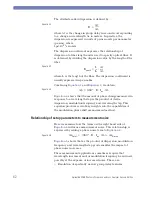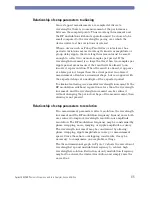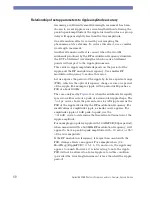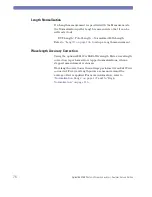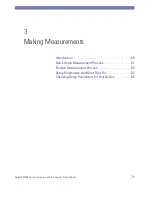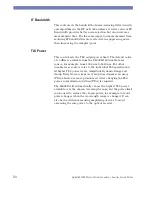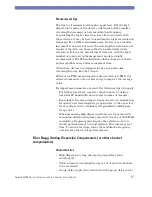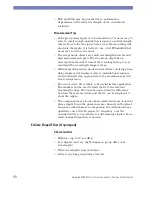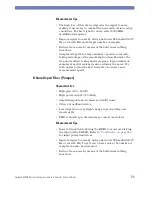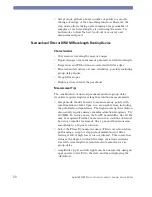
Agilent 86038B Photonic Dispersion and Loss Analyzer, Second Edition
75
Input Polarizer Adjustment
The 86038B also has an automated adjustment of the input
polarizer in the polarization controller. This polarizer should be
adjusted for optimal alignment with the polarization of the light
from the tunable laser. This alignment can vary somewhat
depending on the wavelength range to be measured, and due to
environmental changes. The optimization is performed at the
start of normalization, or by itself through the menu item
System > Optimize Input Polarizer. If the function is activated
manually, the position will only be reset if the optimum position
has changed by more than 3°. In that case, the current
normalization will be invalidated and a new normalization
should be made. This function can thus be used to test whether
the normalization should be repeated due to environmental
changes to the polarization.
Phase Dynamic Accuracy
An optional procedure corrects for phase dynamic accuracy
errors. This correction is recommended in most cases where the
DUT is expected to exhibit a significant variation of insertion
loss or gain over the measurement wavelength range or when
high accuracy DGD is desired. This procedure adds about one
minute to the normalization routine.
Phase dynamic accuracy (PDA) describes the extent to which a
change in the input RF power level causes an apparent
(erroneous) change in RF phase. The PDA error is highest at
very high and very low RF power levels. The 86038B reduces the
impact of the PDA error by means of a user selectable
calibration routine that runs as part of the normalization
process. The routine sets the modulation frequency and the
wavelength, then steps the TLS optical output level (using
attenuation) in increments from low to full output power. At
each step, the RF phase is measured and associated with the RF
input level. This data is used to correct future measurements.
The PDA data are associated with a particular modulator
frequency and will not be used if the frequency is changed.
Since changing the wavelength range can change the maximum
power level, this may cause PDA data to be cleared. PDA
correction should not be used to measure amplifying devices if
the output power will exceed the maximum available from the
laser instrument.
Содержание 86038B
Страница 1: ...Agilent 86038B Photonic Dispersion and Loss Analyzer User s Guide ...
Страница 4: ...4 ...
Страница 20: ...20 Agilent 86038B Photonic Dispersion and Loss Analyzer Second Edition ...
Страница 34: ...34 Agilent 86038B Photonic Dispersion and Loss Analyzer Second Edition Figure 2 b Rear Panel ...
Страница 58: ...58 Agilent 86038B Photonic Dispersion and Loss Analyzer Second Edition Figure 11 86038B Block Diagram ...
Страница 78: ...78 Agilent 86038B Photonic Dispersion and Loss Analyzer Second Edition ...
Страница 92: ...92 Agilent 86038B Photonic Dispersion and Loss Analyzer Second Edition ...
Страница 202: ...202 Agilent 86038B Photonic Dispersion and Loss Analyzer Second Edition End Sub ...
Страница 230: ...230 Agilent 86038B Photonic Dispersion and Loss Analyzer Second Edition VB 6 0 Syntax pdlaClient Actions PrintScreen ...
Страница 348: ...348 Agilent 86038B Photonic Dispersion and Loss Analyzer Second Edition ...
Страница 349: ......


